This Bread Machine Rye Bread is an easy and delicious loaf that can be made using the white/basic or dough setting in your bread maker. Rye bread has a distinct flavor and is fantastic when making classic, hot sandwiches.
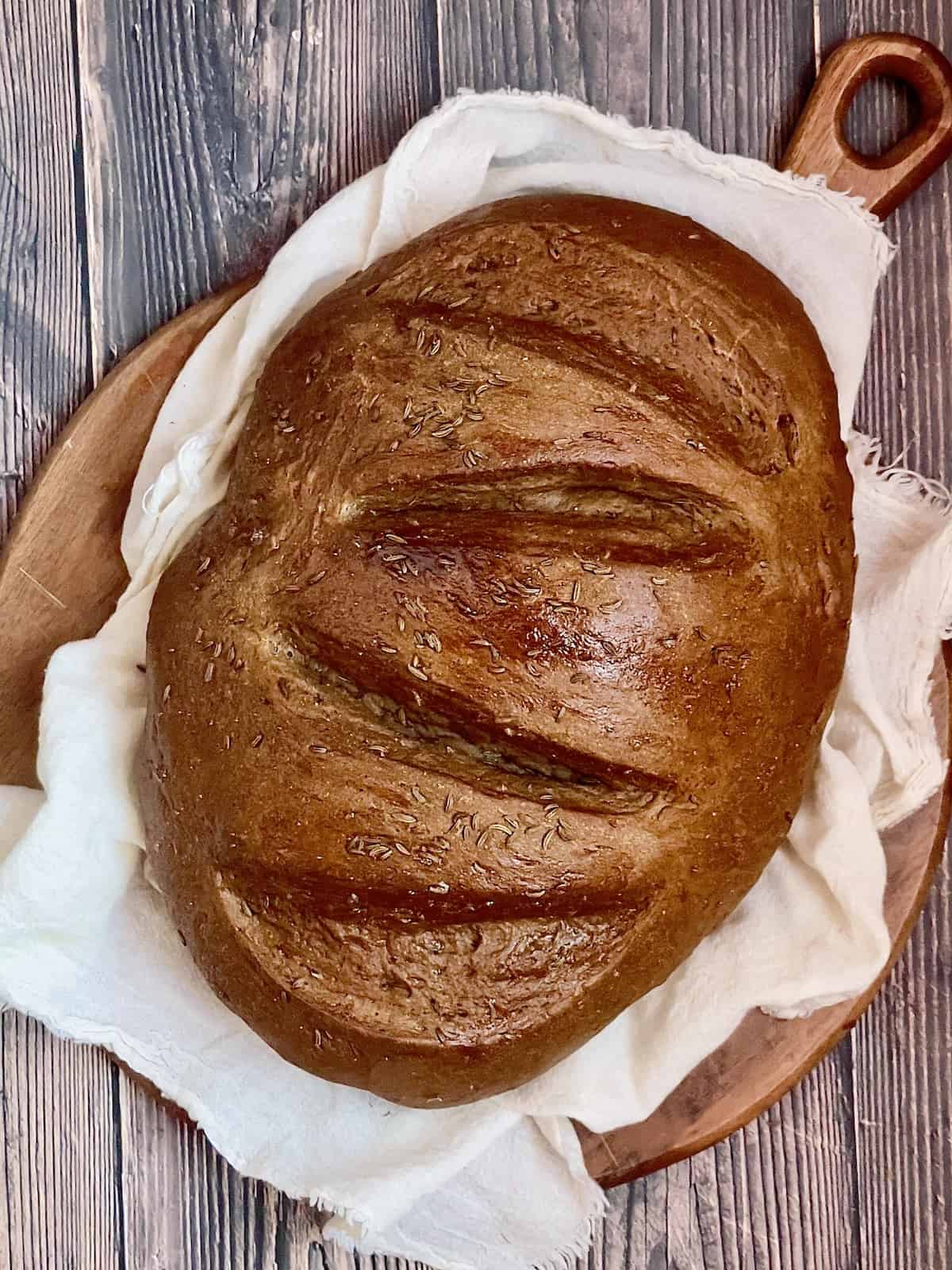
Table Of Contents
Rye bread has a complex flavor profile that can be described as nutty, malty and slightly milky. It has a distinct taste, with hints of molasses, cocoa, and carraway and is often described as earthy.
Bread machine rye bread can be made completely in the bread maker or put through the dough cycle and baked in the oven. It's an easy recipe that uses part rye flour and part bread flour to create a loaf that has a soft, yet somewhat dense, and aromatic earthy taste.
Rye bread is a favorite for making classic sandwiches, such as the reuben and ham & swiss. It's a bread native to colder regions like Iceland, where traditional white and wheat flours aren't able to rise. Breads made with rye flour are naturally more dense and won't rise like breads made with all-purpose or bread flours, so don't expect it to.
A loaf of bread made with only rye flour will be quite flat and dense (albeit delicious!), so rye breads have evolved and are often made with a combination of rye flour and bread flour. This makes a softer bread with a higher rise that can be used for sandwiches and the like.
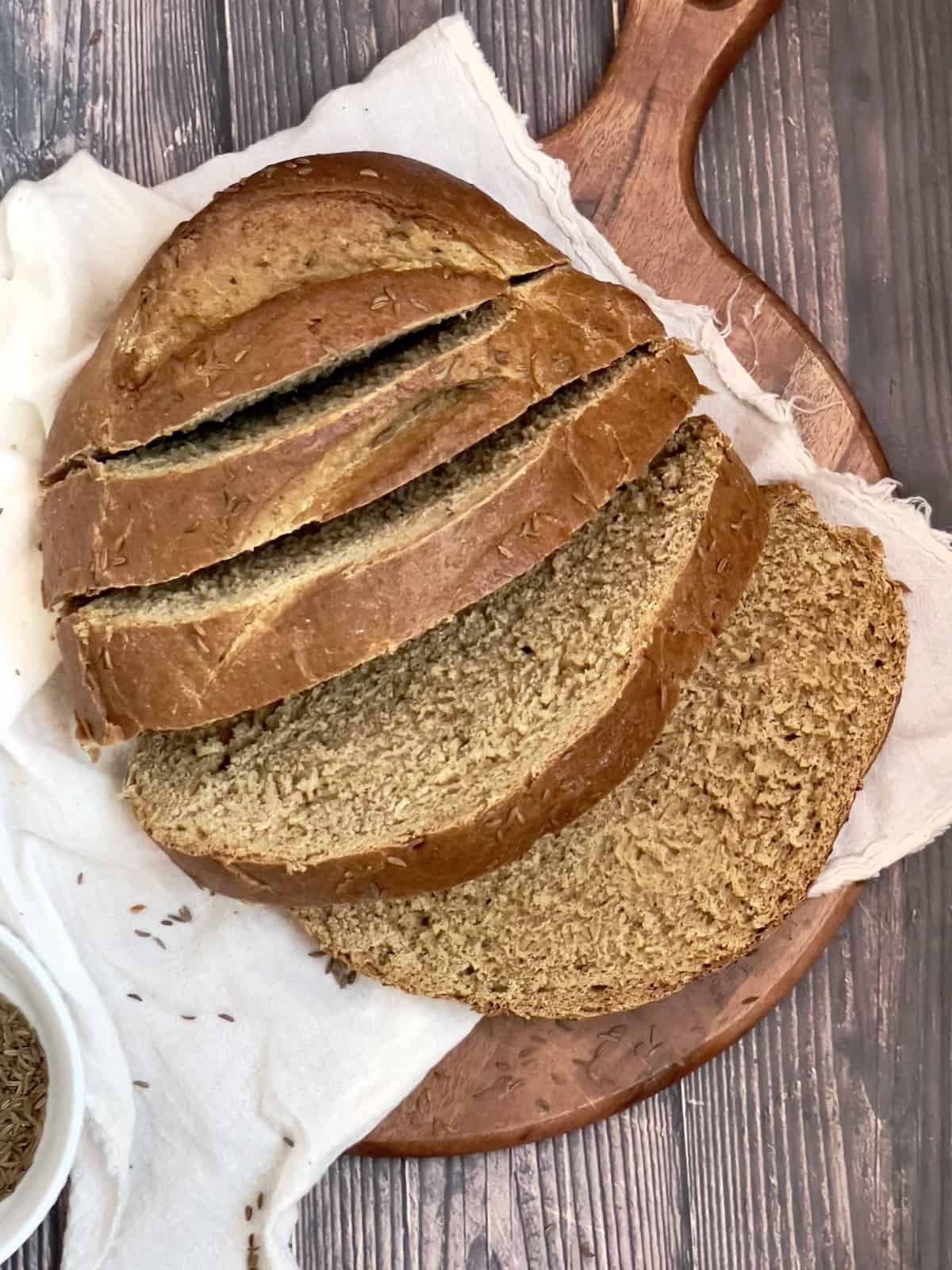
Recipe Facts
Loaf Size: 1.5 pound loaf
Setting: Basic/white bread or dough cycle
Servings: 10-12 slices
This bread machine rye bread recipe was tested in both the Cuisinart CBK-200 and CBK-100, but it should work in any bread maker that has a white/basic setting or dough setting.
Ingredients
- Rye flour: I used a medium rye flour for this recipe, but you can use light or dark. The darker the flour, the more rye flavor you'll have. This bread is made with 1 part rye flour and 1 part bread flour.
- Bread flour
- Molasses: use unsulphured molasses and do not replace with maple syrup.
- Unsweetened cocoa powder: this is optional but will give the bread a darker color and add subtle tangy flavor so I recommend it.
- Unrefined coconut sugar: this is optional but brings another depth of flavor and color. It will balance a little bit of the bread's natural tangy flavor with some sweetness.
- Caraway seeds: in addition to caraway seeds, anise and fennel can also be used, or any of these caraway seed substitutes. These seeds give rye it's distinct flavor. Use as many seeds on the top of the dough as desired for extra flavor and crunch. You can also add a tablespoon or so extra to the dough.
- Olive oil: I use extra virgin olive oil but you can substitute with butter.
- Yeast: active, instant, or bread machine are all fine.
- Salt
I tested 2 versions of rye bread, one with cocoa powder and coconut sugar and one without these. My preference is for using both cocoa powder and coconut sugar. While they are optional and won't affect the rise, structure, or softness of the bread, I highly recommend using them for a more poignant flavor.
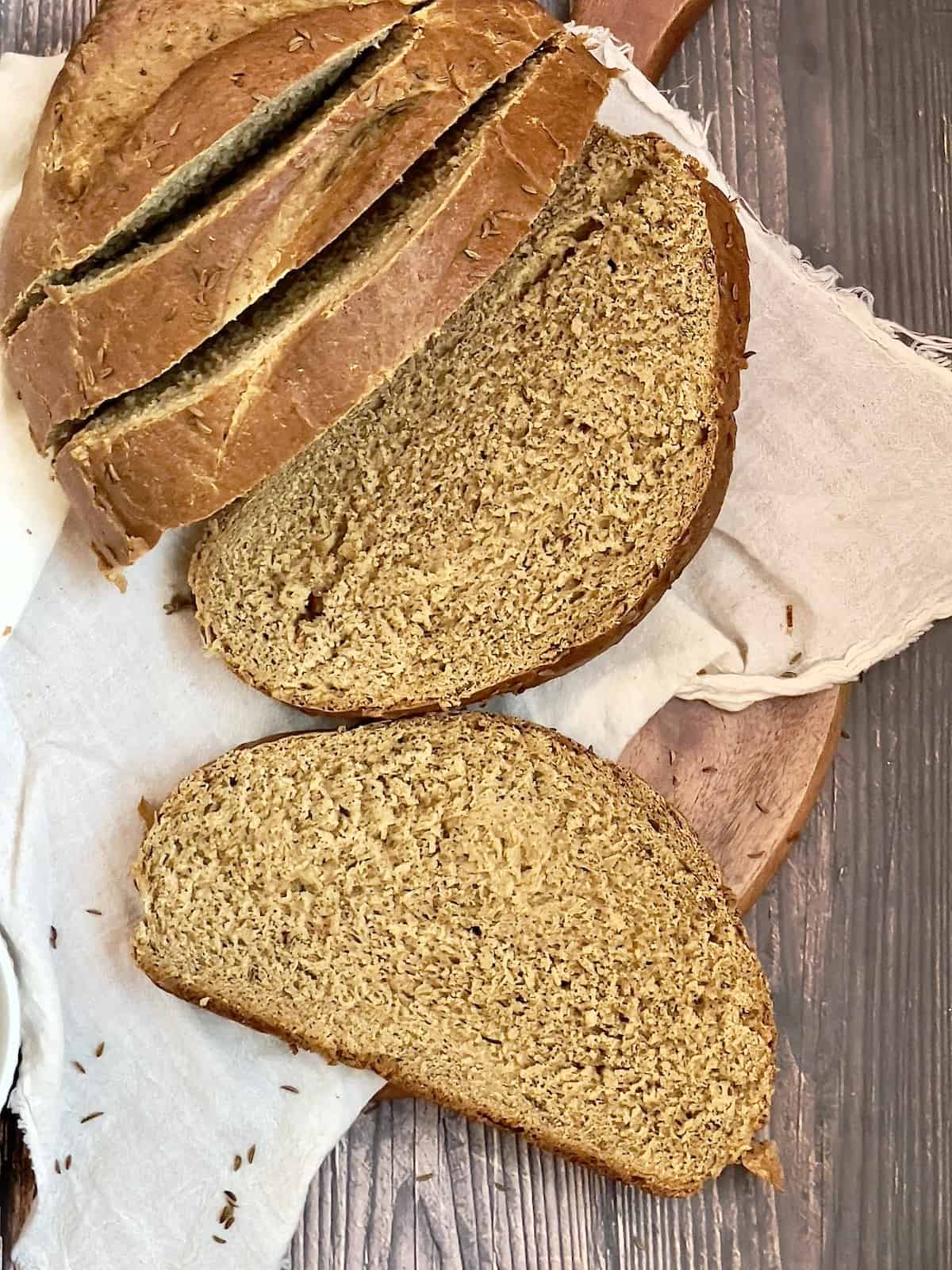
Rye flour is made from ground rye berries, which are also known as whole rye kernels. It ranges in color from white to dark brown and adds a sour, nutty taste to baked goods. It behaves differently than wheat flour, as rye flour is heavier and contains much less gluten.
This all depends on your choice for flavor and color. When choosing a rye flour, color does matter. Light rye flour tastes closer to a wheat bread, while darker rye flours deliver stronger rye flavor. I recommended using a medium or dark rye flour for a richer taste of rye. You'll also get a denser texture the darker your flour is, so keep that in mind. This recipe is made with a medium rye flour and creates a good balance of texture, color, and flavor.
No, rye bread is not a low carb bread. It is comparable to white bread in terms of carbohydrates.
Rye flour is much lower in gluten than wheat flours. Therefore rye breads still contain gluten but not as much as breads made with wheat flour.
Rye flour contains high levels of pentosans, which prevent gluten from forming in dough. When gluten isn't formed, the dough cannot trap gasses needed for good fermentation. The lack of fermentation creates a dense dough and a dense loaf.
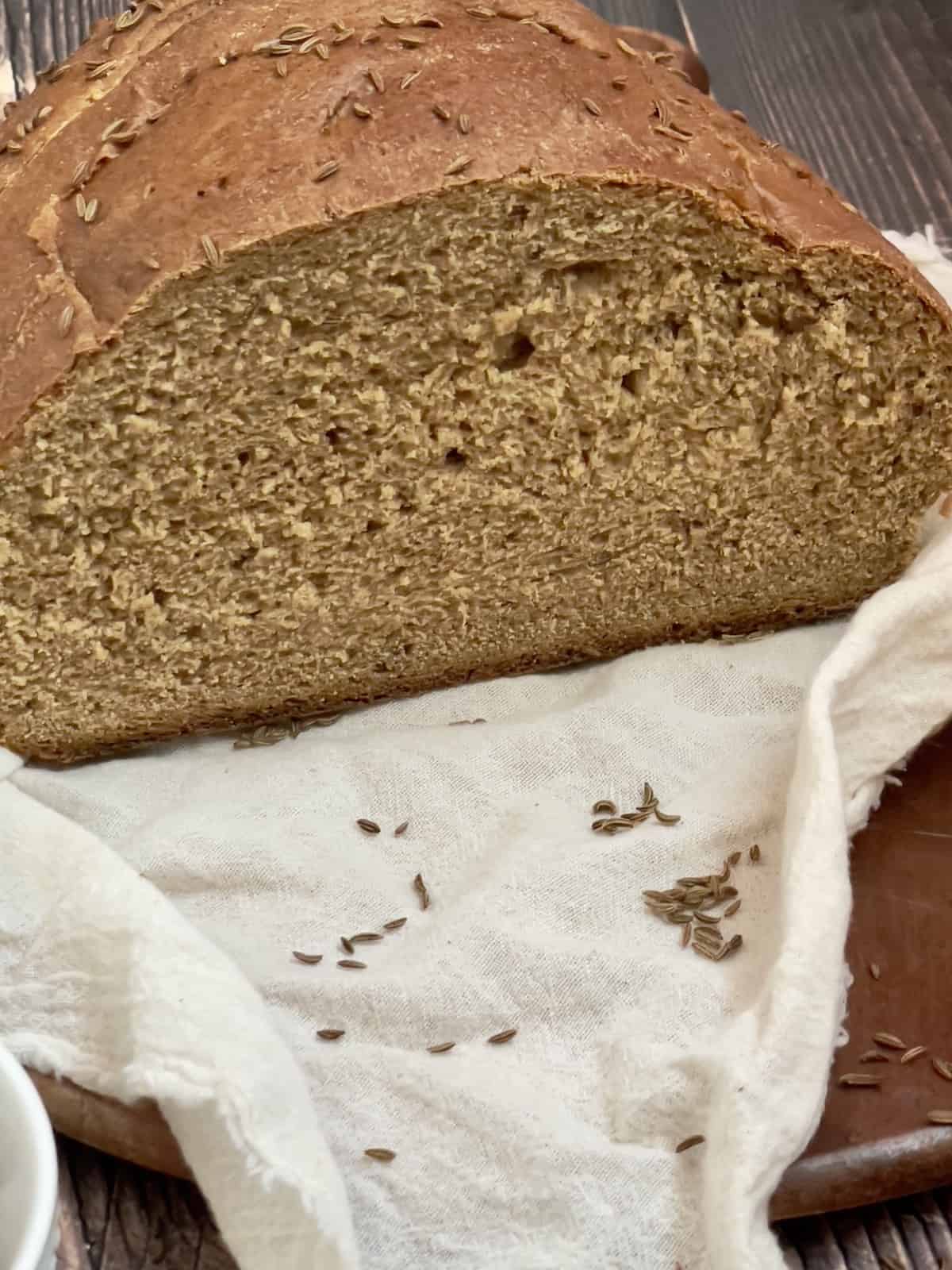
Instructions
STEP 1: Add the ingredients in the order listed to the bread maker pan. *The ingredients are listed in the order that Cuisinart machines require. Check your brand's manual for the correct order. If it differs, add them in the order that your manual states.
STEP 2: Select the white bread/basic setting if baking in the bread machine. Choose the 1.5 lb loaf size and your preferred crust color. If baking in the oven, select the dough setting and choose the 1.5 lb loaf size. During the first kneading cycle, frequently check on the dough. If it's too dry, add more warm water 1 tablespoon at a time until it begins to form a sticky ball. If it appears too wet, add more flour (interchanging rye and bread flour) in 1 tablespoon increments as needed.
Now follow the instructions below for your chosen method of baking.
Bread Maker Baking
After the last rise, gently slice a few cuts in the top and brush the top of the dough gently with milk or an egg wash. Cutting slits will help the bread top from cracking, as can happen when using rye flour. Sprinkle with extra caraway seeds. When baking is complete, turn off the bread machine. Remove the bread pan using oven mitts and wait 10 minutes before carefully removing the bread. Cool on a wire rack completely before slicing.
Oven Baking
When the dough cycle is finished, remove the dough and transfer to a parchment-lined baking sheet. Reshape into a circle, rectangle or other desired shape. Gently cut a few slits in the top with a sharp knife. Brush with milk or an egg wash and press extra caraway seeds into the top and sides of the dough. Cover with a heavy towel and let rise in a warm place until doubled in size, about 1 hour. Bake for 30-35 minutes at 400°F or until the loaf measures 190°F internally with a digital thermometer. Remove from the oven and let cool completely on a wire rack before slicing.
Alternatively, bake in a 9x5 loaf pan, allowing the bread to rise in the pan instead of on a baking sheet.
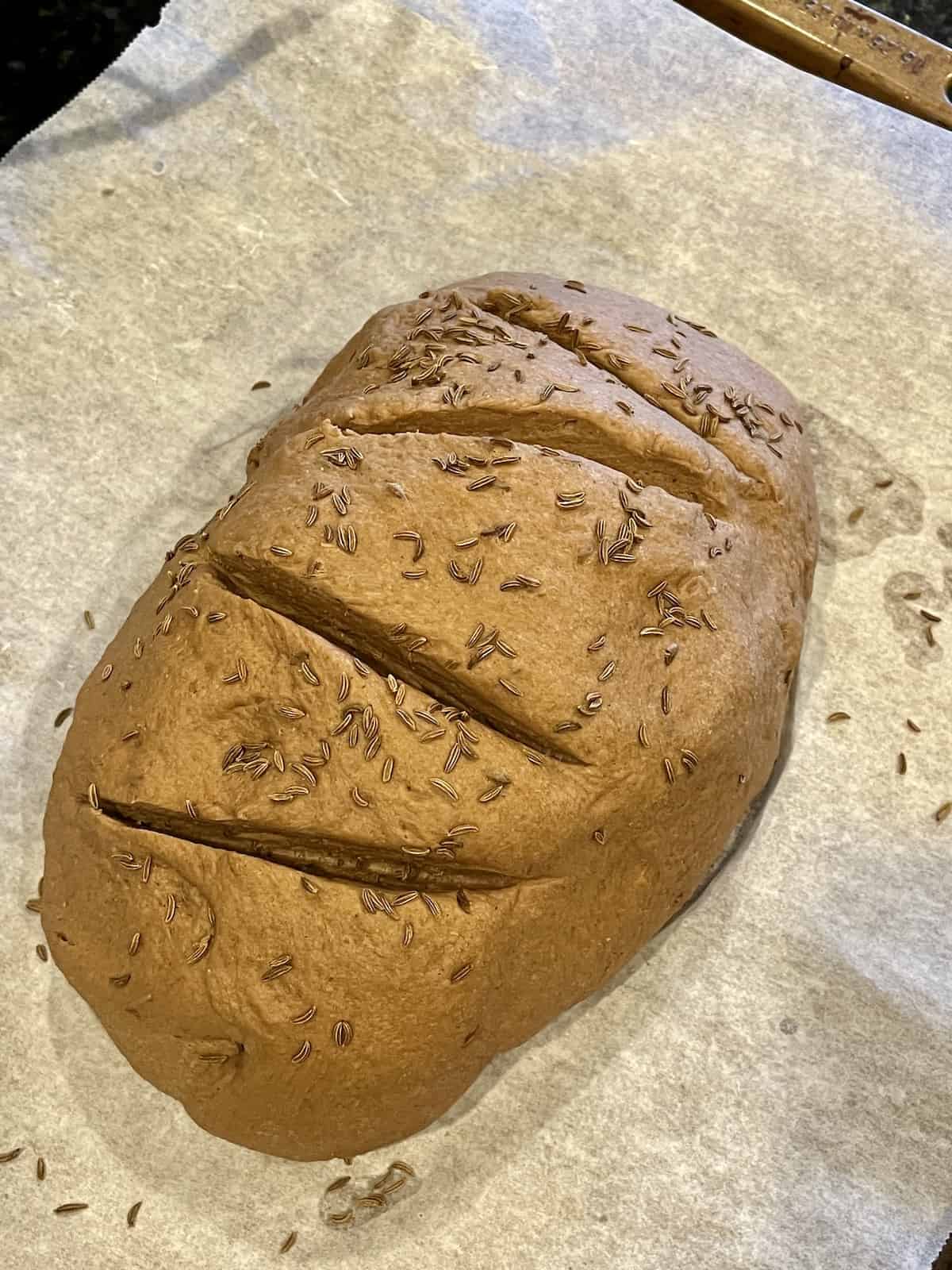
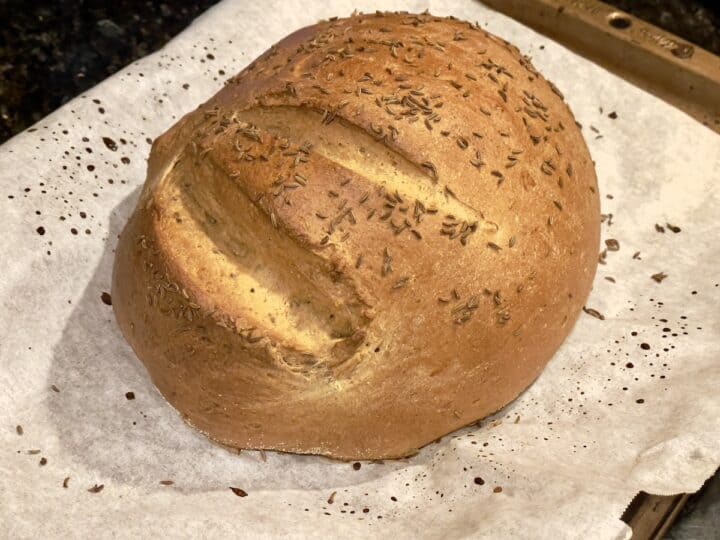
Cooking Tips
- Use a lighter or darker rye flour depending on your preference. Remember that the lighter the rye flour, the less authentic rye flavor you will get.
- Keep the 1:1 ratio of rye and bread flours for the best outcome. Do not use only rye flour for this recipe.
- For a bit of a higher rise and less density, add a tablespoon or two or vital wheat gluten. Please note that I have not tested this. Because rye bread is meant to be denser, I have not attempted to make a lighter, fluffier loaf and in my opinion, it is not necessary.
- Keep the salt and yeast from interacting when adding ingredients to the bread pan. This is very important because if they interact before kneading begins, you'll have a very dense, unrisen or sunken loaf.
- Please do not touch the dough while it's rising! This is so important for rye breads because the gluten structure is not strong to begin with. If you touch the dough while it's rising you will break the gluten formation and the bread will collapse. Always make any cuts in the top of the dough, brush with milk/egg and add extra seeds prior to the last rising cycle.
- Most bread makers will alert you when it's time for the last rise to begin so that you can remove the kneading paddle. Cuisinart machines will chime 6 times. If you don't remove the kneading paddle before the bread begins baking, that's okay. Just carefully remove it once the bread has cooled, although you will have a hole in the bottom of the loaf.
- The Cuisinart CBK-200 is known to produce a darker than normal crust when using the medium or dark crust colors. I always choose the light crust to avoid a crust that is dark and crispy.
How To Store Rye Bread
To get the most out of your homemade bread, it must be stored properly. Bread machine rye bread should be stored in an airtight bread bag or bread box. It will keep for 4-5 days at room temperature when stored properly.
For freezer storage, wrap tightly in plastic and then put into a freezer safe bag. Freeze the loaf in slices for quick defrosting of individual servings. It will keep for 3 months in the freezer.
Recipe
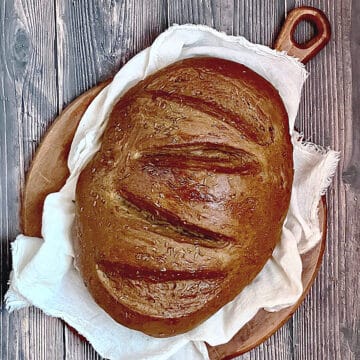
Bread Machine Rye Bread
Equipment
- bread machine
- bread knife
- bread storage bags
- wire cooling rack
Ingredients
- 1⅛ cups water warmed to 115°F
- 2 tablespoon molasses
- 1½ tablespoon olive oil
- 1 teaspoon salt
- 2 tablespoon coconut sugar optional
- 1½ cups rye flour *see notes
- 1½ cups bread flour
- 2 tablespoon unsweetened cocoa powder optional
- 2 teaspoon yeast active, instant, or bread machine
- 3 teaspoon caraway seeds
Instructions
- Add the ingredients in the order listed to the bread maker pan. *The ingredients are listed in the order that Cuisinart machines require. Check your brand's manual for the correct order. If it differs, add them in the order that your manual states.
- Select the white bread/basic setting if baking in the bread machine. Choose the 1.5 lb loaf size and your preferred crust color. If baking in the oven, select the dough setting and choose the 1.5 lb loaf size. During the first kneading cycle, frequently check on the dough. If it's too dry, add more warm water 1 tablespoon at a time until it begins to form a sticky ball. If it appears too wet, add more flour (either type) in 1 tablespoon increments as needed.
- Bread Maker Baking: After the last rise, gently slice a few cuts in the top if desired and brush the top of the dough gently with milk or an egg wash. Sprinkle with extra caraway seeds. When baking is complete, turn off the bread machine. Remove the bread pan using oven mitts and wait 10 minutes before carefully removing the bread. Cool on a wire rack completely before slicing.
- Oven Baking: When the dough cycle is finished, remove the dough and transfer to a parchment-lined baking sheet. Reshape into a circle, rectangle or other desired shape. Gently cut a few slits in the top with a sharp knife. Brush with milk or an egg wash and press extra caraway seeds into the top and sides of the dough. Cover with a heavy towel and let rise in a warm place until doubled in size, about 1 hour. Alternatively, bake in a 9x5 loaf pan, allowing the bread to rise in the pan instead of on a baking sheet. Bake for 30-35 minutes at 400°F or until the loaf measures 190°F internally with a digital thermometer. Remove from the oven and let cool completely before slicing.
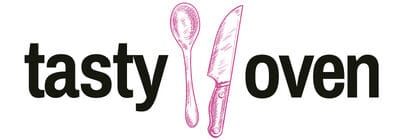

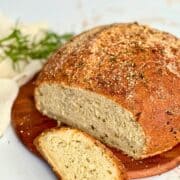
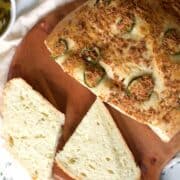
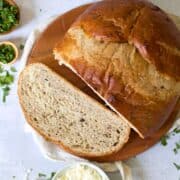

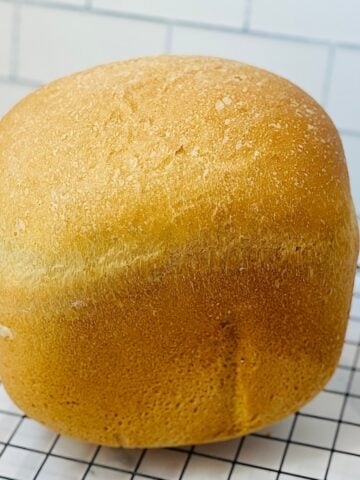
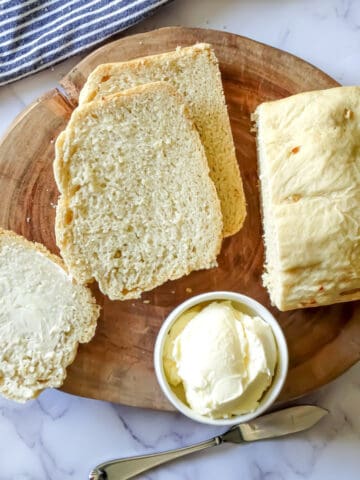
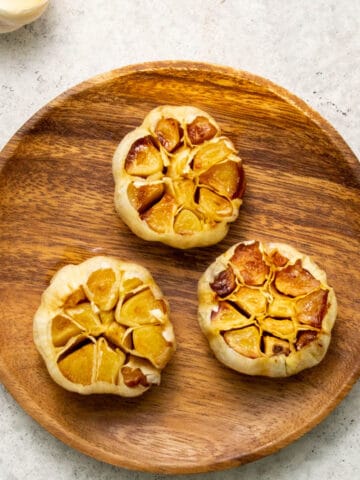
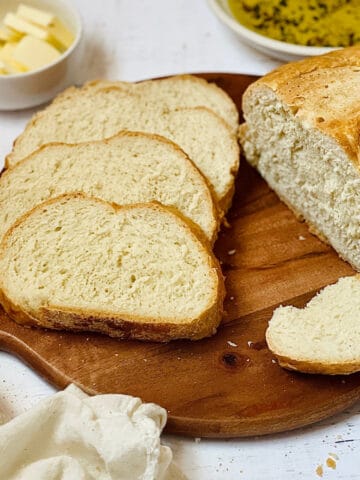
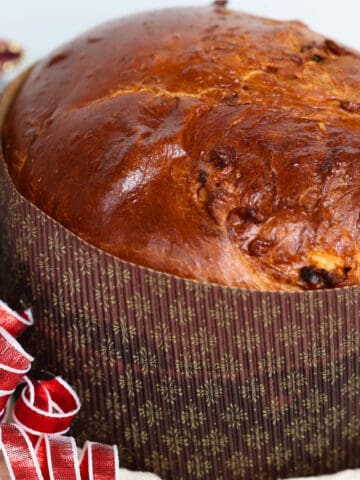
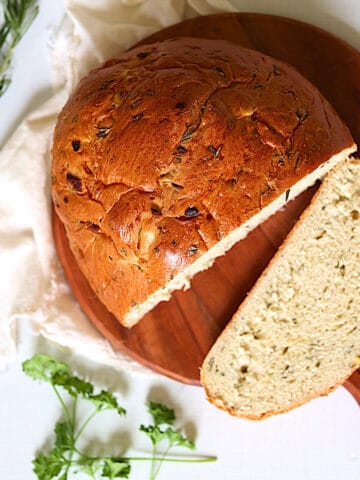
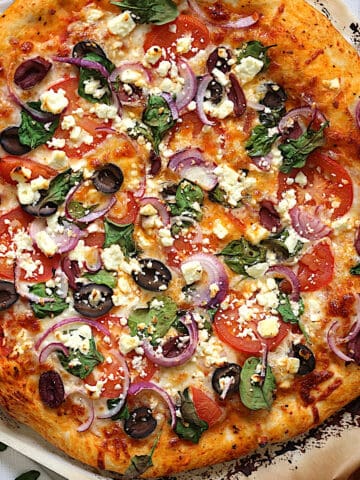
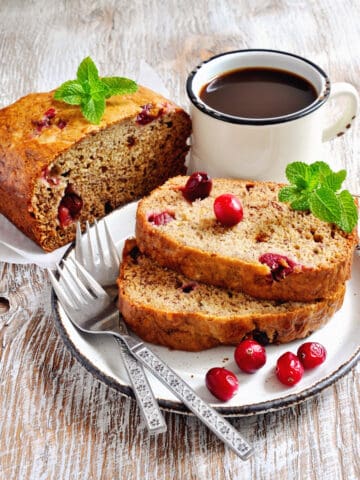
Mitzi
Just perfect! Have made many rye breads over the years but this one is the best! Family loved it! Thanks you!
Kristina Tipps
Thank you for the feedback..I am so glad you love it!